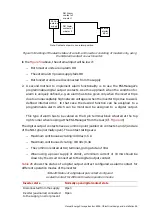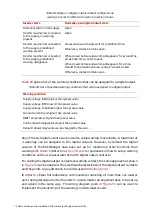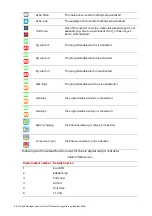
Manual Energy Storage Inverter ESI-S
Electrical design and installation 73
6.14.4Cabling of the digital output contacts to monitor other inverter operation
modes than warnings and alarms
gives an overview of the other functions that can be monitored with the digital
outputs in addition to the already discussed warnings and alarms.
For cabling the digital output contacts to monitor other inverter operation, the same
approach as shown in
can be adopted. The electrical characteristics of the
digital output contacts and the points to pay attention to are discussed in
In order to obtain full redundancy with inverters consisting of more than one master
unit, the digital outputs of all the units in a multi-master arrangement have to be set up
and cabled in the same way. The wiring diagram given in
can be used to
implement the monitoring of these functions in multi-master units.
6.14.5Cabling of main/auxiliary control functionality
The active inverter features main and auxiliary control setup modes. This implies that
two different compensation characteristics can be defined, e.g. one for the day and one
for the night or one for normal network operation and one for backup generator
operation. With the ESI-Manager a set up can be made to either use always the main or
the auxiliary settings. In addition, the possibility exists to switch between main and
auxiliary settings ‘automatically’ according to a signal applied to a digital input of the
ESI-Manager (Cf.
). Any digital input can be configured to act as the deciding
factor for switching between the main and auxiliary settings. Moreover, both normal and
inverse logic can be used to drive the digital inputs.
Note that in a multi-unit inverter system in which more than one master system is
present, the digital inputs of all masters have to be set up and cabled in the same way
to obtain full redundancy.
The electrical requirements of the digital inputs are as discussed in
Chapter 12.
gives an example of how to implement the main/auxiliary control switching
functionality on Digital Input 2. It is assumed that normal control logic is used.






























